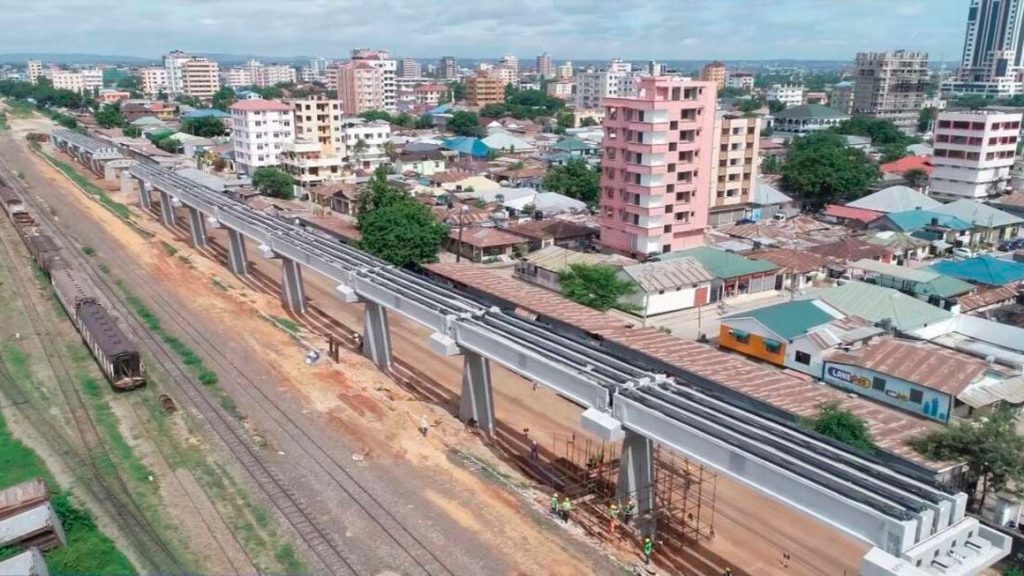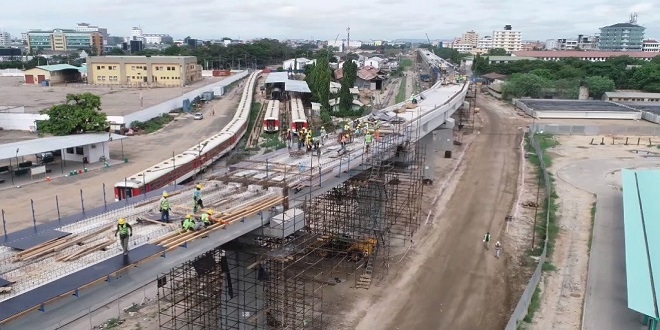Tanzania, known for its diverse landscapes and vibrant culture, is embarking on an unprecedented journey toward economic development. In a groundbreaking move, the Tanzanian government recently signed contracts for constructing seven road projects simultaneously, spanning a staggering 2,035 kilometers.
While this ambitious endeavor promises potential economic growth and improved connectivity, it raises concerns about possible drawbacks. This analysis delves into both the positive and negative implications of these road projects, assessing their impact on Tanzania’s economy and the lives of its citizens.
Over the past decade, Tanzania has witnessed a remarkable surge in road infrastructure development, spearheaded by ambitious projects that have reshaped the nation’s transportation landscape. These transformative endeavors have connected previously isolated regions and played a pivotal role in driving economic growth and social progress.
Let’s know some of the significant road projects undertaken in Tanzania over the last ten years, highlighting their impact on the nation’s development.
Standard Gauge Railway (SGR)
The construction of the Standard Gauge Railway, an extensive railway network spanning several regions, is a testament to Tanzania’s commitment to modernizing its transportation infrastructure. This game-changing project has significantly improved connectivity, easing the movement of goods and people across the country.
Comparable to a high-speed artery pumping vitality into Tanzania’s economic bloodstream, the SGR has bolstered trade, stimulated investment, and enhanced regional integration.
Dodoma-Babati Highway
The Dodoma-Babati Highway, a key road connecting the capital city of Dodoma to the Babati district, has been a game-changer for the region’s development.
This crucial lifeline has opened up agriculture, tourism, and trade opportunities, transforming once-isolated communities into thriving economic hubs. Like a lifeline connecting vital organs, this highway has breathed life into Tanzania’s heartland, fostering growth and prosperity.
Tunduma-Nakonde Road
The Tunduma-Nakonde Road, linking Tanzania to Zambia, has emerged as a vital trade route, facilitating cross-border commerce and regional integration.
This road project has strengthened economic ties between the two countries, bolstering trade activities and stimulating investment. Like a bridge spanning nations, the Tunduma-Nakonde Road has paved the way for mutual prosperity, fostering cooperation and cultural exchange.
Bagamoyo Port Access Road
The construction of the Bagamoyo Port Access Road has set the stage for Tanzania’s emergence as a regional maritime trade hub.
This strategic road project, connecting the Bagamoyo Port to major cities and transportation networks, has attracted significant foreign investments and positioned Tanzania as a gateway to East Africa. Like a well-paved gateway to opportunity, this road has opened doors to trade, employment, and economic growth.
Nyerere Bridge
The Nyerere Bridge, spanning the Kigamboni Creek in Dar es Salaam, is a remarkable engineering feat transforming the city’s transportation landscape. This iconic bridge has alleviated traffic congestion, enhanced connectivity between the city center and its outskirts, and reduced commuting time. Like a graceful arch bridging the gap between urban spaces, the Nyerere Bridge has united communities and propelled Dar es Salaam’s progress.
So, these road projects epitomize Tanzania’s unwavering commitment to infrastructure development and economic progress. By investing in robust transportation networks, Tanzania has created pathways to prosperity, connecting its people, fostering trade, and attracting investments.
These Historical new road construction will be built:
- Kidatu – Ifakara – Lupiro – Malinyi – Kilosa Mpepo – Londo – Lumecha/Songea
- Arusha – Kibaya – Kongwa
- Handeni – Kiberashi – Kijingu – Njoro – Olboroti Mrijo Chini – Dalai – Chambalo – Chemba – Kwa Mtoro – Singida
- Igawa – Songwe – Tunduma
- Masasi – Nachingwea – Liwale
- Karatu – Mbulu – Hydom – Sibiti River – Lalago – Maswa
- Mafinga – Mtwango – Mgololo
What impacts will these Historical new road constructions bring to Tanzania?
Economic Stimulus
The construction of these roads presents a golden opportunity for Tanzania’s economy to flourish. Enhanced infrastructure will attract domestic and foreign investments, boost trade activities, and facilitate the movement of goods and services across regions.
As these roads connect previously isolated areas, they will unlock the economic potential of remote regions, encouraging business growth and employment opportunities. It’s akin to opening the floodgates of prosperity, allowing Tanzania to navigate its way to economic success.
Improved Connectivity
The road projects will establish vital links between regions, providing seamless transportation and connectivity. This connectivity will promote cultural exchange, tourism, and community collaboration. Like veins coursing through the human body, these roads will breathe life into Tanzania’s diverse landscape, fostering unity and a sense of shared progress.
Foreign Dependence
The awarding of contracts to Chinese companies highlights a potential downside. While the engineering expertise and financial backing these companies provide are advantageous, it raises concerns about overreliance on foreign entities.
Tanzania must ensure that the involvement of foreign companies does not compromise its long-term economic independence or lead to unfavorable terms. Striking a balance between external support and safeguarding national interests will be crucial for Tanzania’s sustainable growth.
Environmental Impact
The massive scale of these road projects poses significant environmental challenges. The construction process may disrupt fragile ecosystems, fragment wildlife habitats, and exacerbate deforestation and soil erosion. Careful environmental management and mitigation strategies must be implemented to minimize the ecological footprint of these developments. Progress should not come at the expense of Mother Nature, as Tanzanians must protect the land that sustains them.
What does it mean to Tanzania’s Economy?
These road projects represent a critical crossroads for Tanzania’s economy. They hold the potential to catapult the nation into a new era of prosperity, transforming Tanzania into a regional economic powerhouse.
Infrastructure investment makes Tanzania an attractive destination for business, trade, and investment. However, it is vital for the government to exercise caution, ensuring that these developments serve the nation’s long-term interests. Balancing external assistance and maintaining domestic control will maximize economic benefits while preserving Tanzania’s autonomy.
For the average Tanzanian
These road projects evoke a mixture of hope and skepticism. The improved connectivity promises to bridge the gaps that have hindered progress and access to opportunities. It is akin to opening the doors to new horizons, allowing Tanzanians to explore and tap into their country’s wealth of resources.
However, concerns over foreign dependence and potential environmental repercussions loom large in their minds. Tanzanians must actively engage in shaping these projects, demanding transparency and accountability from their government. Only then can they ensure that their voices are heard and the benefits of these developments are shared equitably.
Tanzania’s ambitious road projects represent a double-edged sword, poised to shape the nation’s future trajectory. As the government takes bold strides toward economic progress, it must tread carefully, balancing the potential gains and risks. Tanzania has an opportunity to pave its path towards a brighter future, uniting its people and propelling the nation towards sustainable growth. The road ahead may be winding and challenging. Still, with careful planning and a steadfast commitment to the nation’s interests, Tanzania can emerge as a shining example of progress and development.


